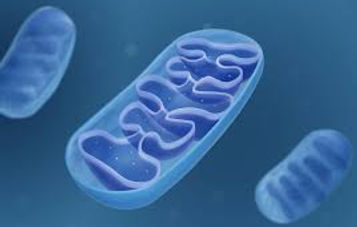فرط نمو الشعر في اضطرابات الميتوكوندريا:
عندما يذوب الايمان في حقائق العلم

Hypertrichosis in mitochondrial disorders :
When faith dissolves in scientific facts.

I have a few cases of mitochondrial diseases that presented with hypertrichosis. One such case involves an 18-year-old patient with MEALS who displayed pronounced hirsutism reminiscent of a monkey in her final days.
I remember the first time I became aware of the relationship between hirsutism and mitochondrial disorders when Dr. Shamima Rahman presented her cases at the SSIEM 2012. I was captivated by the link and sought clarification from a well-known scientist in mitochondrial science, who was unaware of this connection.
Recently, I watched a documentary on the
BBC-Science Channel that showed how stress can affect hair color. Researchers found that hair could turn gray due to stress but might revert to its original color once the stress was alleviated, a phenomenon linked to mitochondrial activity.
That brought to my attention . the Holy Quran verse that states:
"Then how can you protect yourself, if you disbelieve, from a Day that will make the children white-haired?”
"Al-Muzzammil - 17
The notion of the DayAfter, carries deep implications regarding the repercussions of disbelief and the significance of one's actions. The verse from Al-Muzzammil 17 emphasizes th seriousness of this day, where the intensity of events can lead even the youngest to a state of distress, symbolized by white hair.
Thus, one could examine how the essence of fear and accountability intertwines with human experience, reflecting on mitochondrial function and stress as metaphors for the burdens we bear.
Poetry to share on the subject:
In the stillness of the night, shadows arise,
Whispers of a DayAfter, signaling demise.
The Quran speaks of a time, fierce and true,
When innocence wanes, and hearts must kneel.
How can we fear, if our hearts grow cold?
In disbelief we wander, lost in the fold.
Will our children bear witness, with hair turned gray,
To the echoes of choices that dimmed their way?
Mitochondria murmur, in the depths of our strain,
A dance of stress and resilience, joy mingled with pain.
Phenotypes of sorrow, inscribed in our fate,
As we reflect on the burden of love that’s too late…
In Arabic,
Doomsday (القيامة) refer to specific events or aspects of the Day of Judgment.
1. القيامة (Al-Qiyamah): The Resurrection or the Day of Judgment, when all individuals will be resurrected for judgment.
2. الصاخة (Al-Sakhah)**: The Great Blast or the Loud Cry, often described as a significant event that will signal the beginning of the Day of Judgment.
3. القارعة (Al-Qari'ah): The Striking Calamity, referring to the catastrophic events that will occur on the Day of Judgment.
4. الحاقة (Al-Haaqqa): The Inevitable, indicating the certainty of the Day of Judgment and the events associated with it.
5. الغاشية (Al-Ghashiyah): The Overwhelming, describing the overwhelming events that will occur on that day.
These terms are often found in Islamic eschatology and are discussed in the context of the afterlife and the final judgment.

